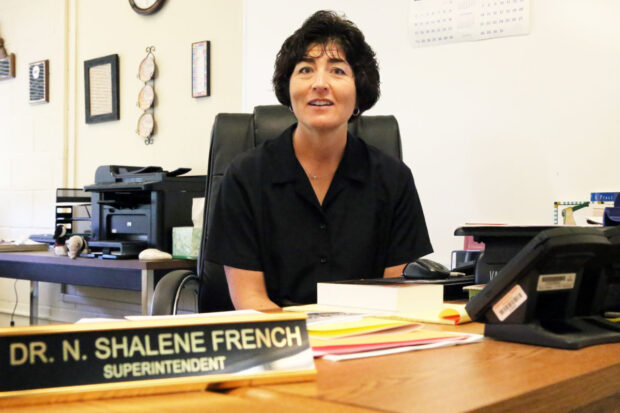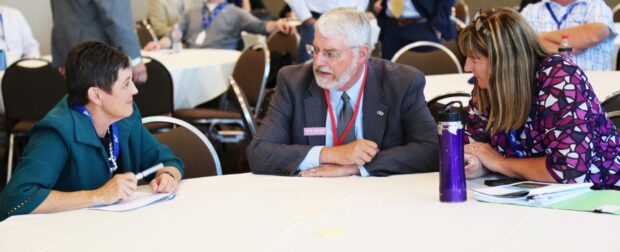About 50 school administrators attended an informational presentation Wednesday that covered Idaho’s plan to comply with the federal Every Student Succeeds Act.
State Department of Education officials led the presentation, which was included in the Idaho Association of School Administrators annual conference that runs this week in Boise.
The ESSA plan has become one of the hottest topics in education this summer as state officials work to finalize their lengthy compliance plan ahead of the feds’ Sept. 18 deadline.
Led by Karlynn Laraway, the SDE’s director of assessment, the ESSA presentation lasted about one hour and attracted superintendents, federal program directors and a host of other administrators hailing from districts both large and small.
The bulk of the presentation and questions covered the state’s accountability plan, Idaho’s long-term goals for education and data and reporting requirements.

Caldwell Superintendent Shalene French and chief academic officer Jodie Mills said they are following the ESSA compliance plan with interest and have stayed up to speed through a series of SDE webinars and regional superintendents meetings.
Both said they are relieved that school accountability will be based on multiple indicators that factor in both proficiency and growth. They are happy accountability will not be boiled down to a single, summative rating based on one high-stakes test.
“We’re no longer identifying schools by a star (rating), where there were so many underlying, misunderstood statistics that falsely identified five stars and falsely identified one stars,” Mills said. “The report card will be more representative of schools.”
Mills added that nothing killed morale in a school quicker than being assigned a low star rating based on misunderstood or misleading data.
French and Mills are pleased that ESSA pulls authority and oversight away from the federal government and gives more power and decision-making responsibilities to the state and its local school districts.
The Caldwell administrators said they are becoming more comfortable with the plan, and Wednesday’s presentation gave them more confidence because SDE officials were able to confirm what was and what wasn’t in the plan.
French said aspects of the ESSA that call for identifying to the feds and the public the lowest 5 percent of schools still keep her up at night, and she hopes the state and feds will handle identification in a transparent, uniform and fair way.
“What does it look like when you are identified?” French asked. “You have got people (who lived through) the No Child Left Behind era and it was punitive — ‘We’re taking you over. We’re removing your staff.’ And now it’s not punitive, but what are the expectations?”
Many school officials are already learning there will be a give-and-take as the state implements a new accountability system based on multiple data measures.
Scott Woolstenhulme, assistant superintendent in the Bonneville School District, asked state officials if districts would be required to track and upload additional, new data points to the state.
“In a nutshell? Absolutely, yes, there will be some,” Laraway responded. “I can think of a couple we are working to finalize for this year’s data collection.”

